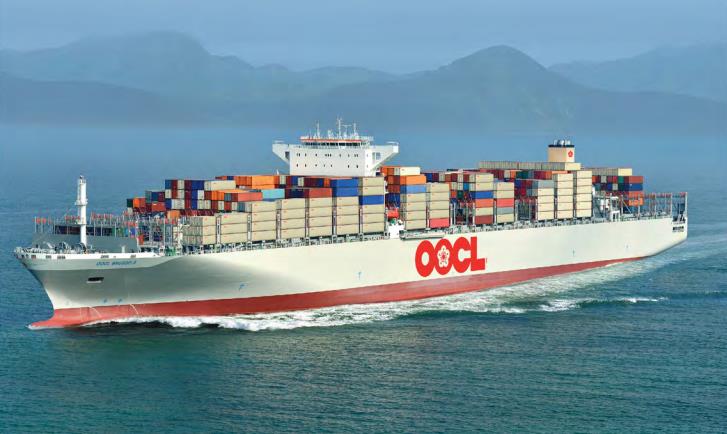OOCL Tumbles Amid Losses

In 2016, Orient Overseas Container Line (OOCL) reported a USD273 million loss as weak freight rates dragged down the average revenue per TEU by almost 19% to just USD774. This was well below the rate achieved during the global financial crisis (GFC) in 2009, which even then was USD924 per TEU.
As with many other lines in 2016, it hit OOCL hard - particularly in its two biggest trades (trans-Pacific and intra-Asia) despite a strong fourth quarter. OOCL, like other liners continue to suffer from the 'rising volume, falling revenue' syndrome that is a result of excessive capacity and weak demand. Notwithstanding, OOCL carried 505,000 TEU more during 2016 that it did in the previous year and revenue tumbled 11.2% to USD4.7 billion. Revenue by trade at OOCL is 37% trans-Pacific, 36% intra-Asia, 16% Asia-Europe and 11% trans-Atlantic.
In just a few weeks, OOCL joins three far larger carriers in the Ocean Alliance. For the next five years, COSCO, CMA CGM, Evergreen and OOCL will operate in a vessel sharing agreement that will give them a 41% market share on the trans-Pacific and a 35% share of the Asia-Europe market.
Several container line executives have expressed optimism that 2017 will be a more profitable year than 2016 and while OOCL CFO Alan Tung said "conditions would certainly be better, it remained a very uncertain market with service contract talks still under way. January and February have seen improving east-west rates and real shipments have gone up on the two main trades, but I am hesitant to say this will continue. As to results, there is a lag time in the market versus the results because the cycle of contracts is April to April, but overall I expect the market to be better in 2017."
This year OOCL will take delivery of its six 20,000 TEU ships, with a total of 98 new vessels of 1.2 million TEU capacity being delivered across the alliance between now and 2019.
As with many other lines in 2016, it hit OOCL hard - particularly in its two biggest trades (trans-Pacific and intra-Asia) despite a strong fourth quarter. OOCL, like other liners continue to suffer from the 'rising volume, falling revenue' syndrome that is a result of excessive capacity and weak demand. Notwithstanding, OOCL carried 505,000 TEU more during 2016 that it did in the previous year and revenue tumbled 11.2% to USD4.7 billion. Revenue by trade at OOCL is 37% trans-Pacific, 36% intra-Asia, 16% Asia-Europe and 11% trans-Atlantic.
In just a few weeks, OOCL joins three far larger carriers in the Ocean Alliance. For the next five years, COSCO, CMA CGM, Evergreen and OOCL will operate in a vessel sharing agreement that will give them a 41% market share on the trans-Pacific and a 35% share of the Asia-Europe market.
Several container line executives have expressed optimism that 2017 will be a more profitable year than 2016 and while OOCL CFO Alan Tung said "conditions would certainly be better, it remained a very uncertain market with service contract talks still under way. January and February have seen improving east-west rates and real shipments have gone up on the two main trades, but I am hesitant to say this will continue. As to results, there is a lag time in the market versus the results because the cycle of contracts is April to April, but overall I expect the market to be better in 2017."
This year OOCL will take delivery of its six 20,000 TEU ships, with a total of 98 new vessels of 1.2 million TEU capacity being delivered across the alliance between now and 2019.









